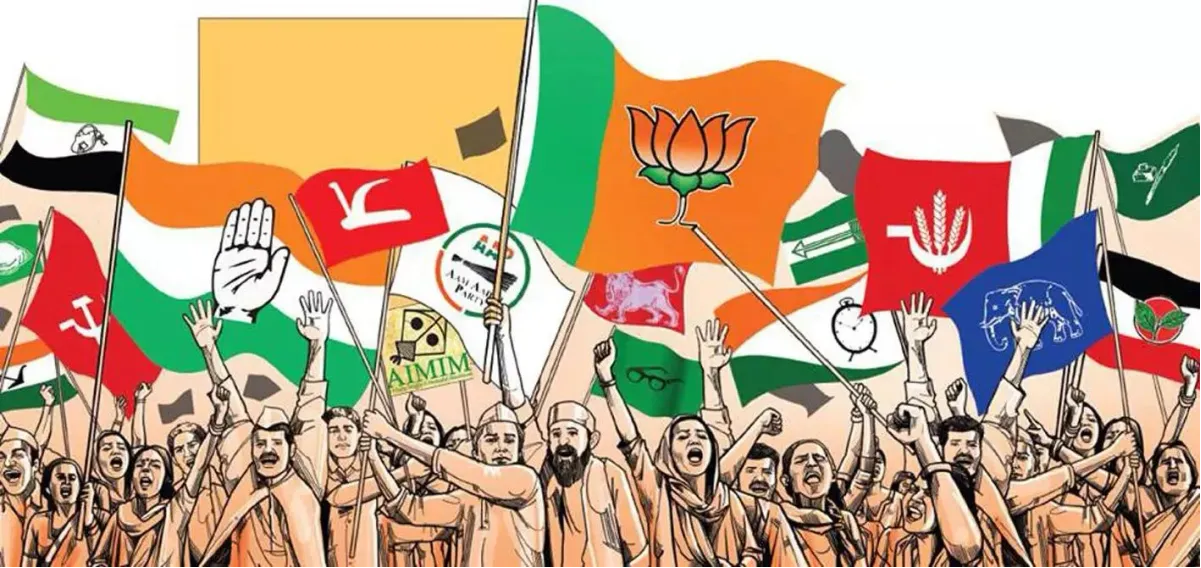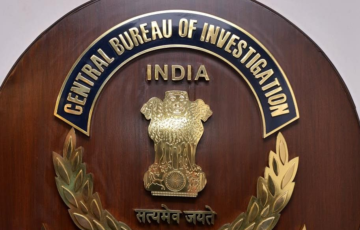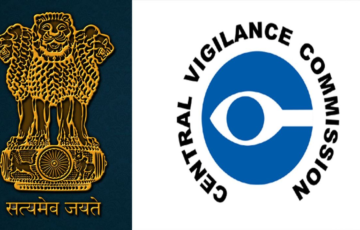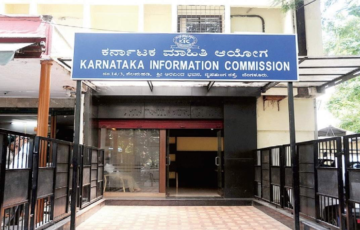POLITICAL PARTIES
Introduction
- Political parties are organized groups of people who share similar political views and work to achieve those goals through elections. They play a vital role in democracies by providing voters with choices, mobilizing support for candidates and policies, and holding governments accountable.
- Political parties typically have a set of core principles or beliefs that guide their platform. These principles may be based on a particular ideology, such as liberalism, conservatism, or socialism, or on a specific issue, such as environmentalism or economic justice. Parties may also have a particular organizational structure, with local, regional, and national chapters.
Historical Background
- The Era of Congress Dominance (1952-1964): During this period, the Congress Party, led by iconic figures like Jawaharlal Nehru, held a firm grip on Indian politics, effectively establishing a one-party system known as the ‘Congress system.’ The Congress Party’s dominance characterized the early years of independent India.
- Challenges to Congress Supremacy (1967): With the passing of Jawaharlal Nehru and the 1967 elections, the Congress system’s supremacy began to be tested. In these elections, the Congress Party lost majorities in eight states, signaling the start of a decline in its political influence.
- Emergence of Regional Parties: As the Congress Party’s dominance waned, regional parties began to emerge and gain prominence across the country. These parties represented the diverse linguistic, cultural, and regional identities within India, offering a counterbalance to the Congress’s hegemony.
- The Janata Party Coalition (1977): In 1977, a significant political development occurred with the rise of a coalition led by the Janata Party. This marked the shift from a one-party system to a multi-party system in India. Rather than seeking ideological consensus, numerous smaller parties coalesced to challenge the Congress Party’s hold on power.
- The Advent of Multi-Party System and Coalition Politics (1989-Present): Since 1989, India has witnessed the emergence of a true multi-party system and the prevalence of coalition politics. This era has been marked by an increasing number of political parties representing diverse regions, ideologies, and issue-based agendas. Coalition governments have become a norm, reflecting the need for cooperation and consensus-building among various political entities to govern a complex and pluralistic nation like India.
- This historical journey highlights the transformative path of India’s democracy, evolving from a one-party-dominant system to a multi-party, coalition-based political landscape. It underscores the adaptability and resilience of India’s democratic framework, reflective of the nation’s intricate and diverse character.
Eligibility for Status of Political Party
State Party
- The recognition of a political party as a State Party in India is based on specific criteria established by the Election Commission. These criteria are designed to acknowledge parties that have a significant electoral presence at the state level. As of the present, there are 64 political parties recognized as State Political Parties. The criteria for recognition are as follows:
- Winning 6% of Valid Votes and Seats in Lok Sabha or State Legislative Assembly: A party is recognized as a State Party if it wins at least 6% of valid votes polled in a general election held either for the Lok Sabha (House of the People) or the Legislative Assembly of a state. Additionally, it must secure at least one seat in the Lok Sabha or two seats in the Legislative Assembly of the state.
- Winning 8% of Valid Votes: A party can also attain State Party status if it wins at least 8% of valid votes in a general election held for either the Lok Sabha or the Legislative Assembly of a state.
- Winning 3% of Seats or 3 Seats in the Legislative Assembly: Another criterion is that a party secures at least 3% of the total number of seats in the Legislative Assembly of a state or wins a minimum of three seats, whichever is higher.
- Winning 1 Seat in Lok Sabha per 25 Allocated Seats: A party can achieve State Party recognition if it wins at least one seat in the Lok Sabha out of every 25 seats allocated to the states in the Lok Sabha.
National Party
- The recognition of a political party as a National Political Party in India is subject to specific criteria established by the Election Commission. National Political Party status is granted to parties that have a substantial presence and representation across multiple states. Currently, there are eight political parties recognized as National Political Parties in India. The criteria for such recognition are as follows:
- Winning 6% of Valid Votes and Seats in Multiple States: A party is recognized as a National Political Party if it wins at least 6% of valid votes polled in a general election held either for the Lok Sabha (House of the People) or the Legislative Assembly of a state in four or more states. In addition, it must secure at least four seats in the Lok Sabha from one or more states.
- Winning 8% of Valid Votes in Multiple States: A party can attain National Political Party status if it wins at least 8% of valid votes polled in a general election held for either the Lok Sabha or the Legislative Assembly of a state in four or more states.
- Winning 2% of Lok Sabha Seats in Multiple States: Another criterion for National Political Party recognition is winning at least 2% of the total number of seats in the Lok Sabha from three or more states.
| Party Name | Election Symbol |
| Bharatiya Janata Party (BJP) | Lotus (Kamal) |
| Indian National Congress (INC) | Hand |
| Bahujan Samaj Party (BSP) | Elephant |
| Communist Party of India (CPI) | Ears of Corn and Sickle |
| Communist Party of India (Marxist) (CPI-M) | Hammer, Sickle, and Star |
| Nationalist Congress Party (NCP) | Clock |
| All India Trinamool Congress (TMC) | Flowers and Grass |
| National People’s Party (NPP) | Book |
Functions of Political Parties
- Political parties play a vital role in Indian democracy. They perform a number of important functions, including:
- Articulating and representing public opinion: Political parties provide a platform for citizens to express their political views and to advocate for their interests. They also aggregate public opinion and articulate it to policymakers.
- Mobilizing voters: Political parties mobilize voters to participate in elections and to support their candidates. They do this through a variety of activities, such as voter registration drives, get-out-the-vote campaigns, and canvassing.
- Recruiting and training candidates: Political parties recruit and train candidates to run for office. They also provide support to their candidates during the election campaign.
- Holding governments accountable: Political parties hold governments accountable by criticizing their policies and by providing an alternative to the ruling party. They also play an important role in scrutinizing government spending and performance.
- Promoting political education and socialization: Political parties educate voters about their policies and programs. They also help to socialize people into the political process.
- Providing a link between the government and the people: Political parties serve as a link between the government and the people. They convey the concerns of the people to the government and communicate the government’s policies and programs to the people.
- In addition to these general functions, political parties in India also play a number of specific roles, such as:
- Representing the interests of different social groups: Political parties in India represent the interests of different social groups, such as castes, religions, and linguistic groups. This helps to ensure that the voices of all social groups are heard in the political process.
- Promoting democracy and pluralism: Political parties promote democracy and pluralism by providing voters with a choice of candidates and policies. They also help to educate voters about their rights and responsibilities.
- Strengthening the federal structure of India: Political parties with a presence in multiple states help to strengthen the federal structure of India. They provide a national platform for the discussion of regional issues and concerns.
- Political parties are an essential part of Indian democracy. They play a vital role in representing the interests of the people, mobilizing voters, holding governments accountable, and promoting political education and socialization.
Conclusion
The political parties in India are the cornerstone of its democracy, performing vital functions from representing public opinion to mobilizing voters and holding governments accountable. They ensure the diverse voices and interests of the population are heard and play a key role in upholding democratic principles, pluralism, and federalism. In a complex and dynamic political landscape, political parties are the linchpin connecting the government and the people, shaping the nation’s future, and safeguarding its democratic values.












